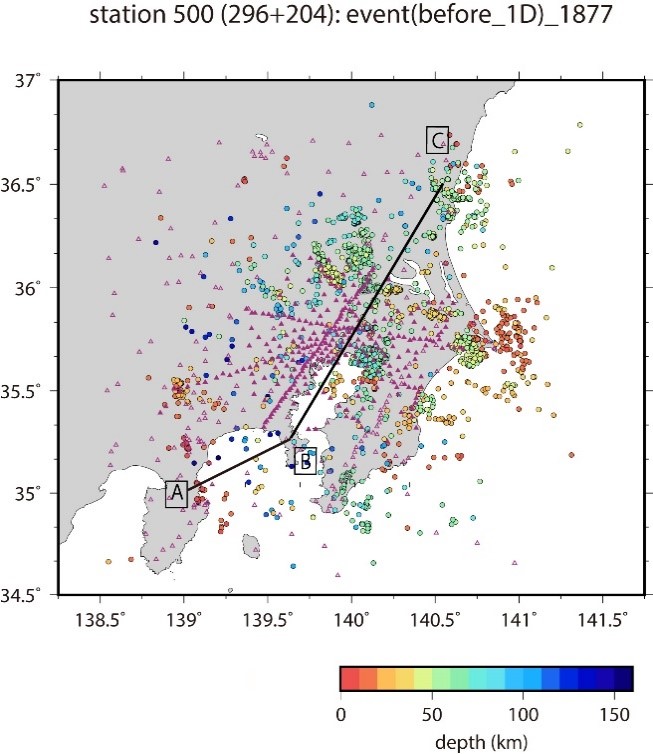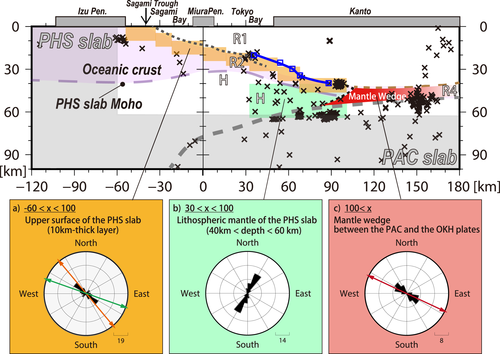Motoko Ishise, Aitaro Kato, Shin’ichi Sakai, Shigeki Nakagawa, Naoshi Hirata
Journal of Geophysical Research: Solid Earth, 126 (2021)
https://doi.org/10.1029/2020JB021194
Abstract
The Tokyo metropolitan area, in the Kanto region of Japan, lies on the Okhotsk plate. Historically, the city has suffered severe damage as a result of megathrust ruptures and intra-plate earthquakes (M ≥ 7) caused by the dual subduction of the Philippine Sea (PHS) slab and the Pacific slab. To understand the unique seismotectonics of the region, we constrain the three-dimensional (3-D) P wave isotropic and azimuthal anisotropic velocity structure beneath the Kanto district, by applying a high-resolution anisotropic tomography method to travel time data from a dense seismic network consisting of ∼500 stations (including the Metropolitan Seismic Observation network, MeSO-net). The seismic structure, derived from 1,877 local earthquakes, suggests that the basement of the Okhotsk plate consists of an old accretionary zone formed when the NE Japan arc was part of the Asian continent. The anisotropy observed in the oceanic crust of the subducting PHS slab suggests the presence of a well-developed system of bending-related faults, oriented parallel to the axis of the Sagami Trough. We identify a low-velocity anomaly within the PHS slab mantle, located beneath the Boso Peninsula, which has previously been interpreted as representing the overlying continental plate or the oceanic crust of the PHS slab. Lateral variations in the anisotropy structure suggest that the NE limit of the PHS slab lies farther south than previously thought. Anisotropy directions can be used to identify heterogeneities embedded in low-velocity anomalies within the PHS slab, which have not been identified in previous studies using only isotropic velocity models.



